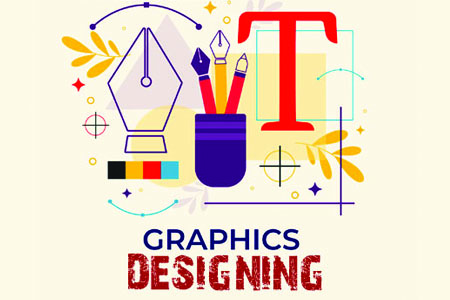The Art of Graphic Design
Published: April 11, 2021
Graphic design is an ever-evolving field that encompasses the creative process of combining images, typography, and various visual elements to convey a message or tell a story. It plays a crucial role in shaping our visual world, from branding and advertising to web design and print media. In this article, we will explore the fundamental principles and key considerations of graphic design, highlighting its significance in effective communication and its impact on various industries.

Understanding the Purpose:
Every design project begins with a purpose. Whether it's designing a logo, a website, or a poster, it is crucial to understand the intended message and target audience. Defining the purpose helps guide the design process and ensures that the visuals align with the desired goals.

Composition and Layout:
A well-designed composition is essential to create visual harmony and guide the viewer's attention. The arrangement of elements, such as images, text, and whitespace, influences the overall aesthetic and readability of the design. The effective use of grids, alignment, and hierarchy helps establish a clear visual hierarchy and enhances the user experience.
Typography:
Typography is the art of arranging and selecting typefaces to make written language readable and visually appealing. Choosing the right fonts and understanding their characteristics, such as legibility and readability, is crucial. Typography plays a significant role in conveying tone, mood, and hierarchy within a design, making it an integral part of graphic design.
Color Theory:
Colors evoke emotions, create visual interest, and communicate meaning. Understanding color theory, including color harmonies, contrast, and symbolism, enables designers to effectively convey messages and establish visual identities. The careful selection and combination of colors can greatly impact the overall impact of a design.
Visual Branding and Identity:
Graphic design plays a vital role in establishing and maintaining a brand's identity. A consistent and cohesive visual branding strategy across various platforms helps create brand recognition and fosters trust among consumers. From logo design to packaging and marketing materials, graphic designers are responsible for creating visually appealing and memorable brand experiences.
Designing for Digital Platforms:
With the rise of digital media, graphic design has expanded beyond traditional print media. Designing for websites, mobile applications, and social media platforms requires an understanding of user interface (UI) and user experience (UX) design principles. Creating responsive designs that adapt to various screen sizes and optimizing user interactions are essential skills for modern graphic designers.
Evolving Trends and Tools:
Graphic design trends are ever-changing, influenced by technology, culture, and artistic movements. Staying up-to-date with the latest design trends and tools is crucial for designers to create contemporary and relevant visuals. From software and digital tools to techniques such as motion graphics and interactive design, continuous learning and experimentation are vital in the graphic design industry.
Graphic design is an art form that blends creativity, aesthetics, and purposeful communication. From conveying powerful messages to enhancing brand experiences, graphic designers shape the visual world we live in. By understanding the fundamental principles and staying abreast of evolving trends and technologies, designers can continue to create impactful and visually stunning designs that captivate audiences across various mediums.
you may also like : Exclusive Graphic Design Agency Delhi | Creative Graphic Designing | Graphic Designing